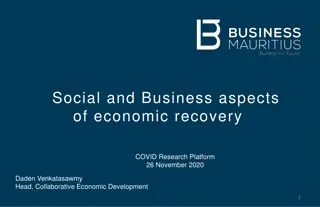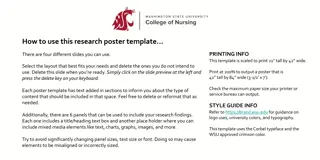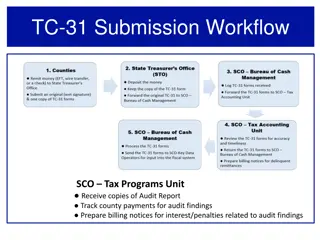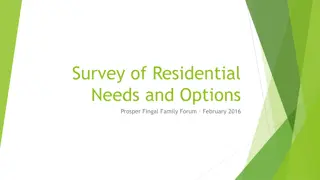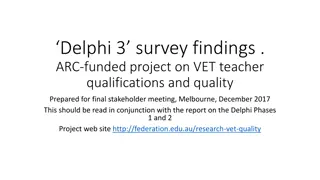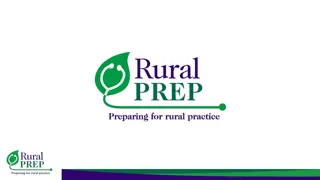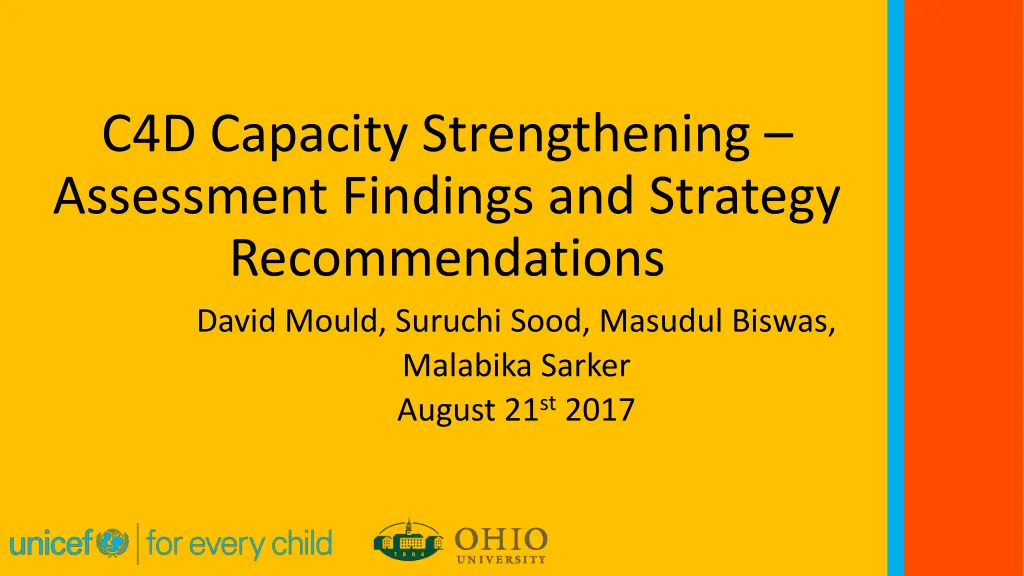
Capacity Strengthening Assessment Findings & Recommendations
Explore the findings and strategy recommendations from a C4D capacity strengthening assessment conducted by David Mould and team in Bangladesh. The project focuses on academic institutions and government agencies, aiming to institutionalize C4D practices and create a core group of professionals. Methodology involved field visits, web surveys, and mapping studies. Findings aim to address gaps and strengths, providing an overarching strategy for capacity enhancement.
Download Presentation

Please find below an Image/Link to download the presentation.
The content on the website is provided AS IS for your information and personal use only. It may not be sold, licensed, or shared on other websites without obtaining consent from the author. If you encounter any issues during the download, it is possible that the publisher has removed the file from their server.
You are allowed to download the files provided on this website for personal or commercial use, subject to the condition that they are used lawfully. All files are the property of their respective owners.
The content on the website is provided AS IS for your information and personal use only. It may not be sold, licensed, or shared on other websites without obtaining consent from the author.
E N D
Presentation Transcript
C4D Capacity Strengthening Assessment Findings and Strategy Recommendations David Mould, Suruchi Sood, Masudul Biswas, Malabika Sarker August 21st2017
2 Background
3 Objectives This project seeks to investigate: Using a phased approach, this project focuses on academic institutions with some additional information on government agencies that implement C4D Future capacity assessment and strategy may address government agencies at both the national and divisional levels, and major NGOs and CBOs. The extent to which C4D is institutionalized among partner and collaborating organizations in Bangladesh To describe current gaps and strengths To provide an overarching strategy to create a core group of C4D planning, theory, and research professionals
4 Timeline and Tasks JANUARY 2017 01 02 03 Developed a conceptual framework, the Levels of Institutionalization (LoIn) approach, to measure capacity, and research tools for data collection Conducted a mapping study (desk review) of public and private academic institutions with relevant curriculum, research and partnerships in C4D Signed institutional/corporate contract between the UNICEF Bangladesh Country Office (BCO) and Ohio University 04 05 06 Conducted a web-based survey with faculty and administrators at 21 public and private academic institutions on C4D- related teaching, research and service and managerial and structural issues Conducted field visits to 13 institutions to interview faculty and administrators to assess curricula, research, human resources, managerial capacity, infrastructure, and other areas Met with the chair and members of the University Grants Commission (UGC) to discuss its role in promoting C4D-related curriculum and research AUGUST 2017
5 Methodology
6 Approaches Mapping Study Field Visits Web Based Survey
7 Mapping Study 01 Internet Research Information from the official websites of public, private and international universities and the UGC. The list of universities and their website URLs was compiled from the UGC s website 02 Documents Review Reports and articles on academic activities, funding and partnerships. This overlapped with the Internet research because some websites had links to downloadable articles and reports 03 Primary Data via Direct email Contact Information requests via email to crosscheck data and/or gather information unavailable on university websites. Emails sent to faculty members, department chairpersons or deans
8 Field Visits 11 universities, two medical colleges University of Dhaka Bangabandhu Sheikh Mujib Medical University Chittagong University University of Rajshahi Shahjalal University of Science and Technology Khulna University Jahangirnagar University Islamic University, Kushtia Jatiya Kabi Kazi Nazrul Islam University University of Barisal Asian University for Women Rajshahi Medical College Sher-e-Bangla Medical College, Barisal Faculty at all academic ranks Professor, Associate Professor, Assistant Professor and Lecturer, department chairs, deans and three vice-chancellors Mixed groups from social and life sciences. Individual department faculty: anthropology, sociology, mass communication and journalism. Medical faculty from Community Medicine. Main purpose to probe the perspectives of faculty and administrators, identify capacity gaps, and explore potential areas for collaboration
9 Web Based Survey Faculty Members 72 questions on their personal teaching research and service roles 439 faculty members Mostly close-ended questions with pre-set options. Some open-ended questions, asking faculty to reflect on strengths, challenges and barriers associated with teaching, research and service. University Leaders Faculty Members Chairs, Deans, Vice- chancellors N = 70 56 questions on their academic units as a whole University Leaders 60 university leaders N=9
10 Key Findings
11 Teaching Research The use of existing data or the collection of new data and the publication of research findings in peer- reviewed journals Key Activities Both formal classroom instruction and student advising and mentoring . 1 2 Administration 14% Service 7% Service Paid or unpaid collaboration and consultation with governmental, non- governmental or private sector groups Administration Participation in committees and other administrative duties that are not directly related to teaching, research or service Teaching 52% Research 27% 3 4
13 C4D Implementation C4D Developing messages and materials, managing communication activities Coursework C4D Planning C4D Evaluation Designing evidence-based communication strategies Monitoring implementation and evaluating effectiveness of communication interventions 100 80 60 40 27.1 22.9 17.1 20 0 Classes in C4D Planning Classes in C4D Implementation Classes in C4D Evaluation
15 Teaching Related Strengths and Weaknesses Faculty (25) Curricular flexibility (9) Multiple related departments (9) Facilities (7) Institutional infrastructure (6) Students (1) Lack of Infrastructure (23) Lack of capacity in C4D (17) Funding and management (10) Rigid curricular structures (6) Social and political issues (4) Personal motivation and dedication (3)
16 C4D Research Experience 100 88.6 77.8 80 66.7 55.6 60 54.3 40 20 14.3 0 Ever bid for C4D contract research Bid for C4D contract research in past 3 years Faculty University Leaders Interest in bidding for C4D contract research
17 Barriers to Research Funding (41) crisis Lack of Motivation and interest (13) Workload (25) Research Capacity (13) Infrastructural Issues (12) Incentives (8) Social and Political Environment (6)
18 Service Experience Collaborations with Faculty Unpaid Paid Consultants (9) Academic (7) Local NGOs 20.5 50 Government partners 30 48 International aid organizations 39 51 Local NGOS (6) Government (2) Private sector 11.5 48
19 Barriers to Service University infrastructure and bureaucracy (14) Teaching (6) and research (2) priority Interest and Motivation (9) Lack of value for service activities (8) External - social and political issues (5) Capacity/Opportu nity Gaps (5) Financial constraints (3)
20 Collaboration with UNICEF 100 85.7 80 74.2 72.6 60 55.6 Interest in participating in workshop (August 2016) Interest in participating in long- term collaboration with UNICEF 40 22.6 19.4 20 14.3 11.1 11.1 6.4 3.1 1.6 0 0 0 0 0 Very Interested Interested Neither Uninterested/Very uninterested Faculty Very Interested Interested Neither Uninterested/Very uninterested University Leaders
21 Types of Collaboration with UNICEF Participation in UNICEF sponsored activities (5) Service Learning (Student Engagement) (5) Teaching, Training (13) Research (20) Knowledge generation and Management (4) Advocacy (internal and external) (2) Publications (2)
22 Mapping Government Agencies
23 Tasks An analysis of the C4D capacity of government agencies, using new and/or adapted research tools, will form the next stage of the national capacity assessment, with a third phase focusing on NGOs Identify government agencies with C4D activities and to [M]ap their niche and focus in C4D (research, teaching/training, planning, implementation, etc.
24 Methodology Focus on implementing agencies those that either conducted or contracted for C4D campaigns and interventions. Agencies were selected based on UNICEF programme areas, such as health, education, nutrition, child protection, and water, sanitation and hygiene: Three ministries MoPME, MoHFW and MoI have comprehensive communication strategies, which include C4D. The team summarized and analysed the MoPME and MoHFW strategies; at the time of writing, the MoI report was not available Senior researcher Dr. David Mould met with the officials of the Bureau of Health Education (BHE) and Directorate General of Family Planning s Information, Education and Motivation (IEM) unit in the Ministry of Health and Family Welfare BRAC University James P. Grant School of Public Health, research team supervised by Dr. Malabika Sarker, met with staff at the Ministry of Information, Ministry of Women and Children, the Health Services Division s Nutrition and Public Health project, the Department of Social Services and the Department of Public Health Engineering Ministry of Women and Children Affairs Ministry of Primary and Mass Education (MoPME) Ministry of Health and Family Welfare (MoHFW) Bureau of Health Education (BHE) o Health Services Division s Nutrition and Public Health project o Directorate General of Family Planning (Information, Education and Motivation Unit) o Ministry of Information (MoI), Department of Mass Communication Department of Social Services (Ministry of Social Welfare) Department of Public Health Engineering (Sanitation), Ministry of Local Government, Rural Development and Cooperatives
26 Summary of Findings 5 1 Staff competencies in C4D: At most agencies, staff hired based on Bangladesh Civil Service (BCS) exam, not academic background or professional experience. May lack specialized knowledge/skills in C4D. Monitoring and management:Several agencies contract out C4D projects (especially donor-funded projects) to vendors and not well equipped to undertake process evaluation. Continued investment in staff training: Staff transferred and/or promoted on a regular basis. C4D training should be regarded as a long-term investment in systems strengthening, creating a cadre of trained professionals across ministries. 2 6 Summative Evaluation: Extent to which summative evaluation built into design of C4D projects unclear. To develop and scale up best practices, evaluation of behavioural outcomes needs to be considered upfront. 3 7 Alignment with ministry-level communication strategies: Some staff charged with C4D projects unfamiliar with ministry- level communication strategies and goals, indicating gap between policy and implementation. Partnerships: Most partnerships with other government agencies and donors, including international NGOs. Because NGOs are rarely mentioned, unclear how much collaboration exists with government agencies. 4 8 Formative research: Lack of formative research to shape intervention or campaign design, content, selection of communication channels, and target audience. Few agencies implement evidence-based C4D, probably because of lack of funding, staff and expertise. Funding cycles: All agencies subject to budget cycles of government and donor agencies. Changing behaviour especially social norms is a slow process and at odds with the way in which money flows, usually by fiscal year.
27 Recommendations
28 Key Issues 1 2 3 4 5 6 7 8 Student numbers and departmental human resources Faculty involvement in Research Faculty Pay Promotion and Incentives Student Involvement in Research Curricular Flexibility and inter disciplinarity Service Learning Competency based education Partnerships
Strategy Recommendations 29 Build partnerships at the sectoral, institutional and departmental levels In the short term, develop curricular content at the module or unit, rather than the class level; in long term, develop C4D-specific master s degree programmes Improve faculty C4D research productivity and dissemination of research Develop C4D service-learning experiences for students On a strategic and selective basis, create niche research centres Promote training partnerships between universities and government agencies and NGOs Make faculty research more widely available through a knowledge management system







